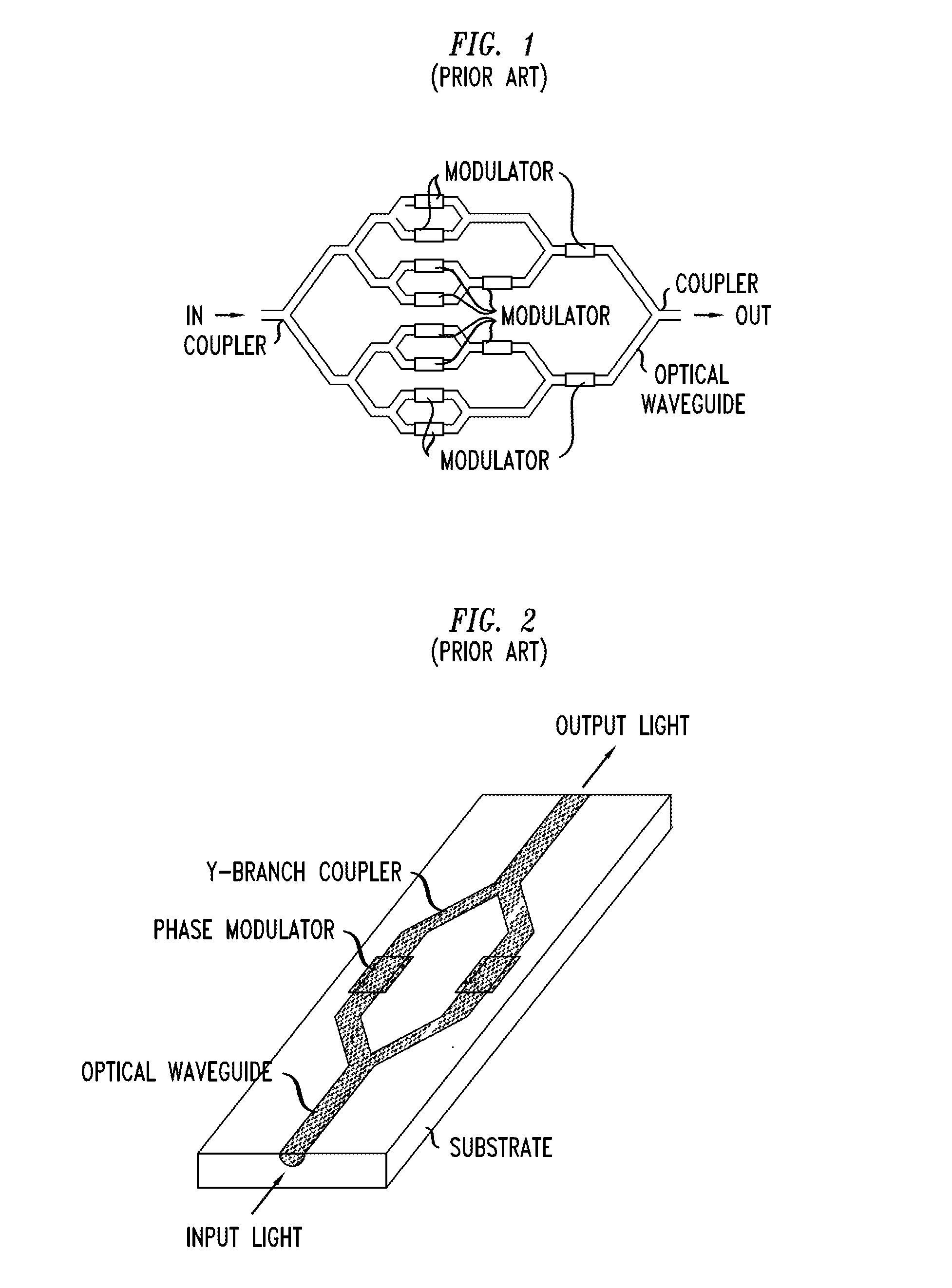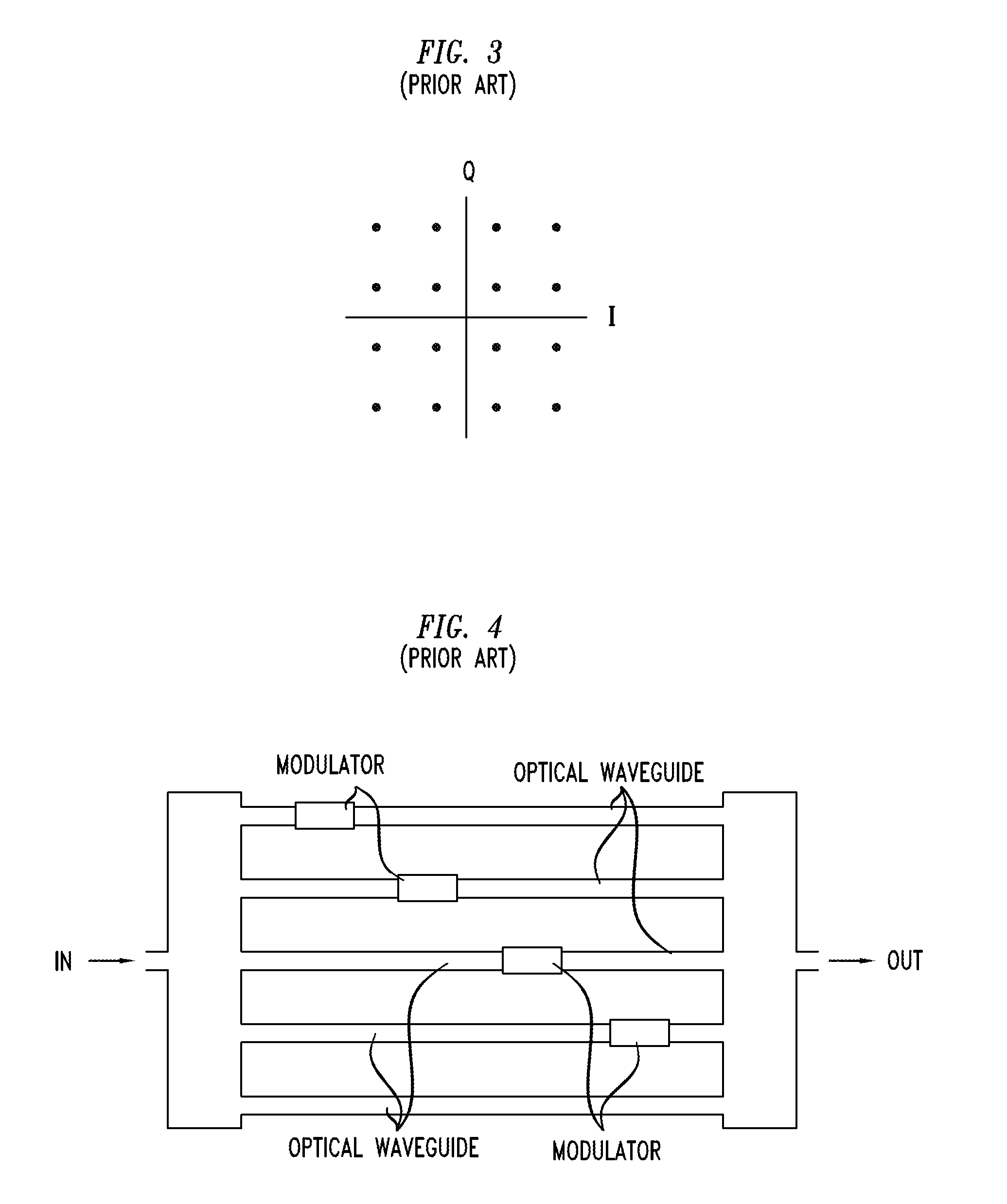Multi-Electrode Photonic Digital To Analog Converting Vector Modulator
a vector modulator and photonic digital technology, applied in the field of optical communication, can solve the problems of destructive and constructive, and achieve the effect of reducing the need for differential amplifiers and low power consumption
- Summary
- Abstract
- Description
- Claims
- Application Information
AI Technical Summary
Benefits of technology
Problems solved by technology
Method used
Image
Examples
Embodiment Construction
[0023]The present invention provides a digital-electronic-to-analog-optical converter comprising two main waveguide paths coupled to each other at a start point and at an end point where each main waveguide path comprises a coupled pair of sub-paths having a first common end and a second common end connected to the start point and end point respectively. The converter further comprises a plurality of modulating signal emitters positioned proximate the sub-paths to modulate an optical wave signal (causing one or more phase shifts) traveling within the sub-path pairs with differential signals generated based on either a differential signal source or the position of the modulating signal emitters relative to the sub-paths. Portions of the optical wave signal travel from the start point through the pair of sub-paths to the end point and said portions interfere (destructively, constructively, or in any suitable intermediate manner) with each other at the end point.
[0024]A transmit signal...
PUM
| Property | Measurement | Unit |
|---|---|---|
| phase shifts | aaaaa | aaaaa |
| phase | aaaaa | aaaaa |
| discrete time | aaaaa | aaaaa |
Abstract
Description
Claims
Application Information
 Login to View More
Login to View More - R&D
- Intellectual Property
- Life Sciences
- Materials
- Tech Scout
- Unparalleled Data Quality
- Higher Quality Content
- 60% Fewer Hallucinations
Browse by: Latest US Patents, China's latest patents, Technical Efficacy Thesaurus, Application Domain, Technology Topic, Popular Technical Reports.
© 2025 PatSnap. All rights reserved.Legal|Privacy policy|Modern Slavery Act Transparency Statement|Sitemap|About US| Contact US: help@patsnap.com



